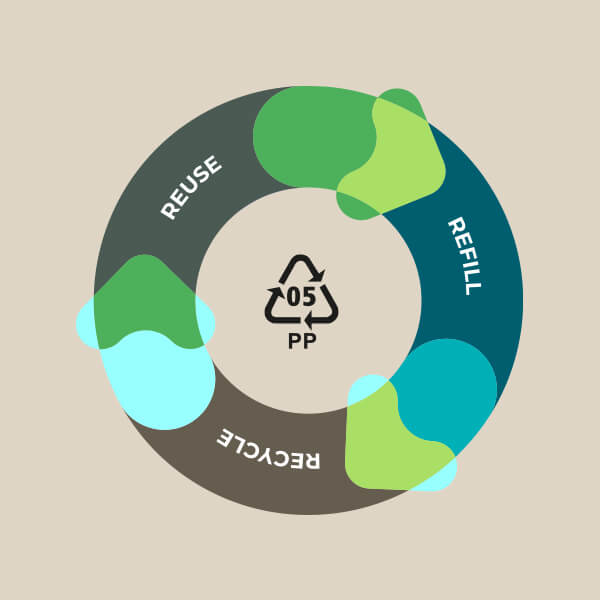No research on a dead planet: Why science must acknowledge the environmental challenges beyond the lab.


Author:
Dr. Valeria Scagliotti
Sustainability Consultant for Life Sciences at SustainLABility
Key topics: Sustainability, Environmental Footprint, Climate Change, IPCC Report, Greener Future
Category: Sustainability
Date: 10/10/2022
Doing something good and contributing to progress.
Many scientists start their research journey with the idea and desire of doing something good and contributing to progress. Over the decades, there have been many discoveries and innovations across every sector for which we should be extremely grateful, one of the latest examples being the COVID-19 vaccines. However, the exponential increase in the number of lab facilities and research institutes has had a significant environmental impact on our planet. Almost every article, presentation or discussion on laboratory sustainability starts with the acknowledgement that labs are extremely energy- and resource-intensive. A huge part of the energy consumption of labs is associated with lab ventilation systems, as well as ultra-low temperature (ULT) freezers and fume hoods (which can use as much energy as 1 and 3.5 typical households, respectively). It is not surprising, then, that labs are the second most energy-consuming industrial spaces (per square metre) after data storage centres. Similarly, the water usage per square metre of lab buildings is generally much higher than standard commercial buildings. On top of this, labs generate tons of waste, especially plastic.
The mini green revolution.
For the past few years, we have been experiencing a ‘mini green revolution’ in science and research, with more and more scientists and lab product manufactures becoming aware of the sustainability challenges of doing science, and seeking more sustainable solutions to lower the environmental footprint of research. I’m sure that this growth of public awareness for environmental issues has a lot to do with the fact that climate change is now a major topic for discussion. Still, are we really grasping the seriousness of the situation?
My name is Dr. Valeria Scagliotti – I’m an independent sustainability consultant – and this time I want to take you beyond tips for addressing lab issues, and have a more general discussion about the global environmental challenges we’re facing.
... but now we talk a lot more about it. Most of us have heard about ‘climate change’ and ‘greenhouse gases (GHG)’ during their educational years. This is because the effects of burning fossil fuels and emitting carbon dioxide (CO2) in the atmosphere have been studied and documented for decades. However, at that time very few of us were probably imaging that the situation would one day be so bad that it would be classified as a ‘emergency’. Now, the words ‘climate emergency’ and ‘climate crisis’ appear more and more often. But how do we know that the planet is indeed in a crisis state?
The most up-to-date review and summary of the climate science. One of the main reasons to write an article on this topic was the recent release of the 6th Intergovernmental Panel on Climate Change (IPCC) report. Founded in 1988, the IPCC is the United Nations (UN) body for assessing the science related to climate change, which is used to advise policymakers and governments. Each report involves hundreds of leading scientists and experts, who revise and summarise the most up-to-date published literature (in the order of many thousand of sources) to provide a very accurate picture of the climate situation at the time of publication. The first assessment report was released in 1990, but things haven’t improved in these past decades. On the contrary, despite many other papers, reports and climate conventions, CO2 emissions and levels in the atmosphere kept raising: to give you an idea, of all the historical global emissions since the industrial revolution (1850), more than 40 % actually occurred in the years between 1990 and 2019.
The first part of the 6th and latest IPCC report was released in August 2021 and focused on the physical science basis of climate change. The findings were so serious that the whole thing was defined as a “code red for humanity”. It’s important to note that the main messages were not new: human-based activities are affecting the climate and many ecosystems across the globe, and the more we continue to emit CO2 (and other GHG) and to destroy natural environments, the worse the situation will get. What changed this time was the level of confidence in the data, and the urgency demanded to take action to avoid the worse-case scenarios. The key take-home messages for me were:
It’s not a problem of future generations! The climate crisis is already affecting entire populations and countries around the world. Record-breaking temperatures are already registered all over the globe, sometimes even reaching life-threatening levels. Additionally, wildfires, floods and droughts are having a huge negative impact on agriculture and ecosystems, and on the people who depend on them. And even in Europe, where most people seem to be able to carry on with their normal life, bad things have been happening. Last year, huge floods wiped out entire cities in Germany, the UK has also been experiencing floods (and now wildfires), the north of Italy hasn’t seen a drop of rain for over 100 days this year, and desertification is threatening entire areas in Spain. The more we warm our planet, the more extreme events like the ones described above will happen.
Adaptation was the theme of the second part of the IPCC report, which was released in February 2022.
Unfortunately, the answer to the above question is not always a yes. There are now natural and human systems that have been so impacted by these extreme conditions that they have lost their ability to adapt to future changes. In other words, some animal and plant species won’t be able to survive in these new conditions, food production will be heavily affected, and some areas will see people being displaced, with serious consequences for their physical and mental health. Despite the implications of its content, very few media outlets have spoken about the report, and it was even worse when the last part came out (hence why I want to shed some light on it).
The third part of the IPCC report, published at the beginning of April 2022, focused on mitigation. In other words, what societies should do to preserve our best chances to have a liveable future. To be frank, the problems were ignored for too long, so now the challenges we face are humongous. To use a scientific analogy, it’s as if a scientist whose work was entirely dependent on winning a grant had started the application the day before the deadline, despite knowing the deadline for a year.
However, despite the gloomy findings, there are some positive messages. For example, energy efficiency has improved and the use of renewable sources of energy is becoming increasingly viable and even cheaper than predicted. Thus, reducing and optimising our energy consumptions, and switching to renewable energy, could really cut down our emissions.
Plus, if we were to invest money in the right places and offer support to whom needs it the most, if appropriate policies were to be made, if sustainable, low-emission options and technologies were to be implemented and used on a wide scale, if natural systems were to be respected and protected, and – very important – if we were to combine top-down interventions with bottom-up social and behavioural changes, then the future could still be way better than what we’ll have if nothing was to be done. Therefore, we must not give up!
One of my favourite quotes from the latest part of the IPCC reports clearly states that “Shifting development pathways towards sustainability […] increases the likelihood of making progress simultaneously on climate action and other development goals”. In other words, the best, fairest, most effective transition to a greener future is the one which puts sustainability at the core of each decision. And who doesn’t want to live a healthier life on a healthier planet?
Going back to the beginning of this article, scientists have played and still play a huge part in understanding the natural world and identifying solutions. But research, as any other sector, cannot ignore the reality of what’s happening beyond the lab walls and must adapt to the coming challenges. There are no silver bullets, and this issue is so complex that it’s practically impossible to give an exhaustive list of practical actions to take. However, to solve a problem, we need to acknowledge it, so the first thing I would recommend is to inform yourself and then talk about it. Knowledge and collective action are both very powerful tools to drive change (and we desperately need things to change).
Finally, strong policies are needed, and actions are most effective when they’re coordinated. Therefore, from public to private sector, from lab workers to managers to policymakers, from suppliers to buyers, let’s be creative, let’s push each other and let’s work together to make science (and our societies) more sustainable!
Tips and more.


The Starlab Green Mission.
Discover Starlab's tips, products and services on the subject of sustainability. Get to know our Green Team. We look forward to a joint #EcolutionMovement.
Podcast: Sustainability in laboratories.
Klaus Ambos, CEO of the Starlab Group, dives deep into the topic with our guest Nikoline Borgermann aka Avasustain – a biochemist and environmentalist.






